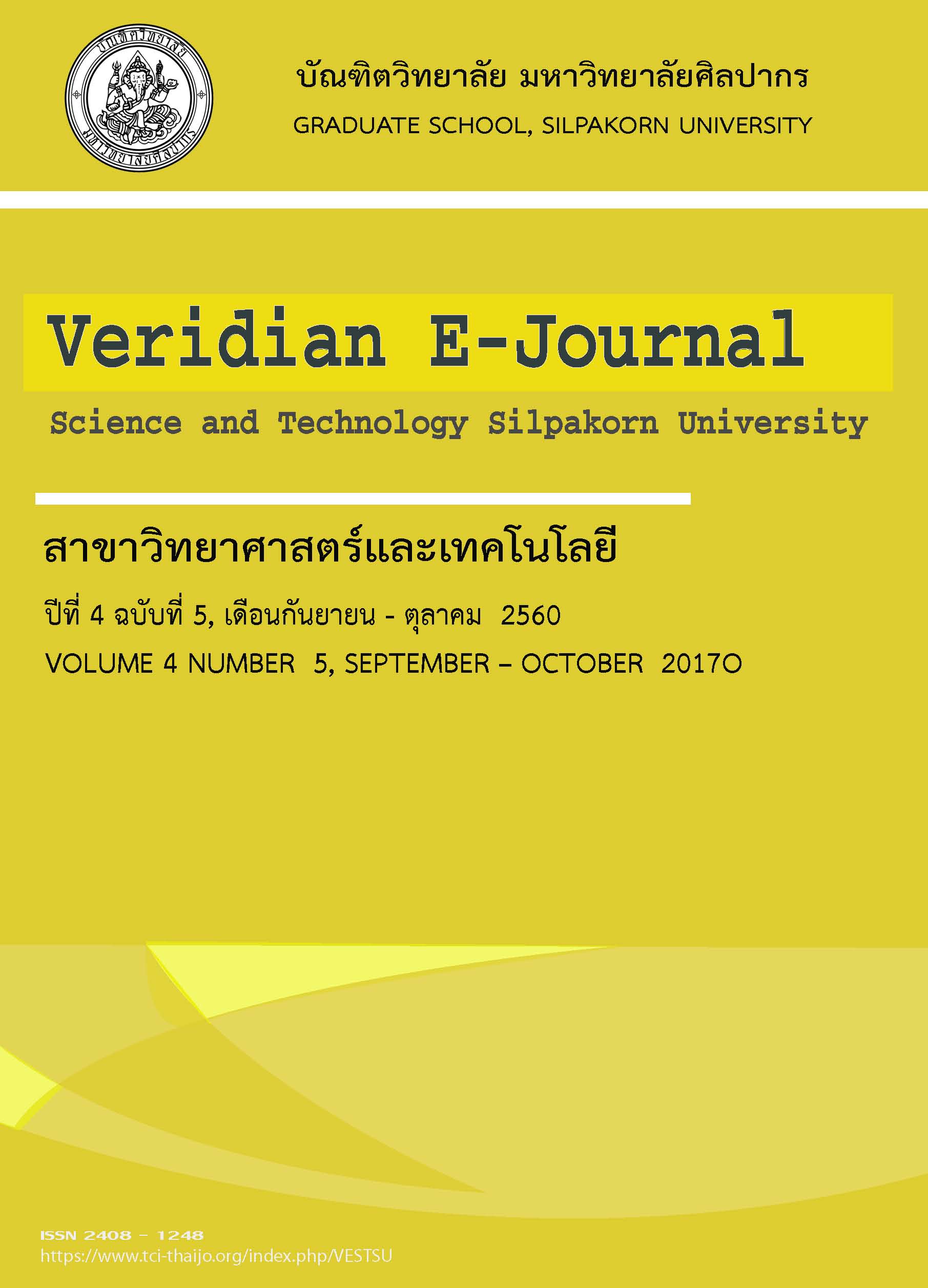การปรับปรุงเปลือกข้าวโพดหมักโดยใช้แบคทีเรียกรดแลคติคจากน้ำหมักเปลือกผลไม้ การย่อยได้โภชนะและสมรรถนะการเจริญเติบโตในแพะลูกผสม (Nutritional improvement of corn peel silage using fermented juice from epiphytic lactic bacteria (FJLB), nutrients digestibilit) การปรับปรุงเปลือกข้าวโพดหมักโดยใช้แบคทีเรียกรดแลคติคจากน้าหมักเปลือกผลไม้ การย่อยได้โภชนะและสมรรถนะการเจริญเติบโตในแพะลูกผสม (Nutritional improvement of corn peel silage using fermented juice from epiphytic lactic bacteria (FJLB), nutrients digestibility and growth performance in crossbred goat)
Main Article Content
Abstract
การทดลองนี้มีวัตถุประสงค์เพื่อปรับปรุงเปลือกข้าวโพดหมักโดยใช้แบคทีเรียกรดแลคติคในน้ำหมักจากเปลือกผลไม้ ต่อการย่อยได้โภชนะและสมรรถนะการเจริญเติบโตในแพะลูกผสม โดยวางแผนการทดลองแบบสุ่มสมบูรณ์ (Completely randomized design: CRD) การทดลองครั้งนี้สามารถแบ่งกลุ่มการทดลองออกเป็น 3 กลุ่มการทดลองๆ ละ 3 ซ้ำ คือ เปลือกข้าวโพดหมักที่ไม่เติมน้ำหมัก (กลุ่มการทดลองที่ 1) เปลือกข้าวโพดหมักที่เติมน้ำหมักจากเปลือกสับปะรดที่ระดับ 1% (กลุ่มการทดลองที่ 2) และเปลือกข้าวโพดหมักที่เติมกากน้ำตาลที่ระดับ 1% (กลุ่มการทดลองที่ 3) พบว่าคุณภาพทางกายภาพของเปลือกข้าวโพดหมักจากทุกกลุ่มการทดลองมีลักษณะตรงกับพืชหมักคุณภาพดี ส่วนองค์ประกอบทางเคมี พบว่ามีความแตกต่างกันอย่างมีนัยยิ่งสำคัญยิ่งทางสถิติ (P<0.01) ได้แก่ เยื่อใย NDF และ ADL แต่ยกเว้น ความชื้น วัตถุแห้ง อินทรียวัตถุ โปรตีนและเถ้า สำหรับปริมาณการกินได้ อัตราการเจริญเติบโต อัตราการเปลี่ยนอาหารเป็นน้ำหนักตัว ประสิทธิภาพการใช้อาหารในแพะ และสัมประสิทธิ์การย่อยได้ของโภชนะ พบว่าไม่มีความแตกต่างกันทางสถิติ (P>0.05) ยกเว้น การย่อยได้ของวัตถุแห้ง เยื่อใย ADF และเซลลูโลส จากการศึกษาครั้งนี้สรุปได้ว่าการเติมน้ำหมักจากเปลือกสับปะรดไม่มีผลกระทบต่อปริมาณการกินได้ อัตราการเจริญเติบโต อัตราการเปลี่ยนอาหารเป็นน้ำหนักตัว และประสิทธิภาพการใช้อาหารในแพะ แต่มีผลทำให้การย่อยได้ของวัตถุแห้งในแพะสูงกว่ากลุ่มการทดลองอื่นๆ จึงสามารถใช้น้ำหมักจากเปลือกสับปะรดเป็นสารเสริมในการทำพืชหมักได้
The objective of this study attempted to improve nutrient digestibility of corn peel silage using fermented juice produced by epiphytic lactic bacteria (FJLB) from fruit peel and to investigate its effects on growth performance in crossbred goat. This experiment was designed in a completely randomized design (CRD) which consisted of three treatments with three replicates per treatment namely corn peel silage without FJLB (T1), corn peel silage with FJLB from pineapple peel 1% (T2) and corn peel silage with molasses 1% (T3). The results showed that physical quality of all treatments met the characteristics of good silage. The chemical composition was significantly different among treatments (P<0.01) (NDF and ADL) except moisture, dry matter, organic dry matter, protein and ash. Feed intake (FI), average daily gain (ADG), feed conversion ratio (FCR), feed efficiency (FE) and nutrients digestibility were not significantly different among treatments (P>0.05) except that of dry matter, ADF and cellulose. In conclusion, FJLB had no effect on feed intake, average daily gain, feed conversion ratio and feed efficiency in goat but it had a higher digestibility of dry matter than the other treatments. However, FJLB is suitable to use as feed additive to improve silage quality.

